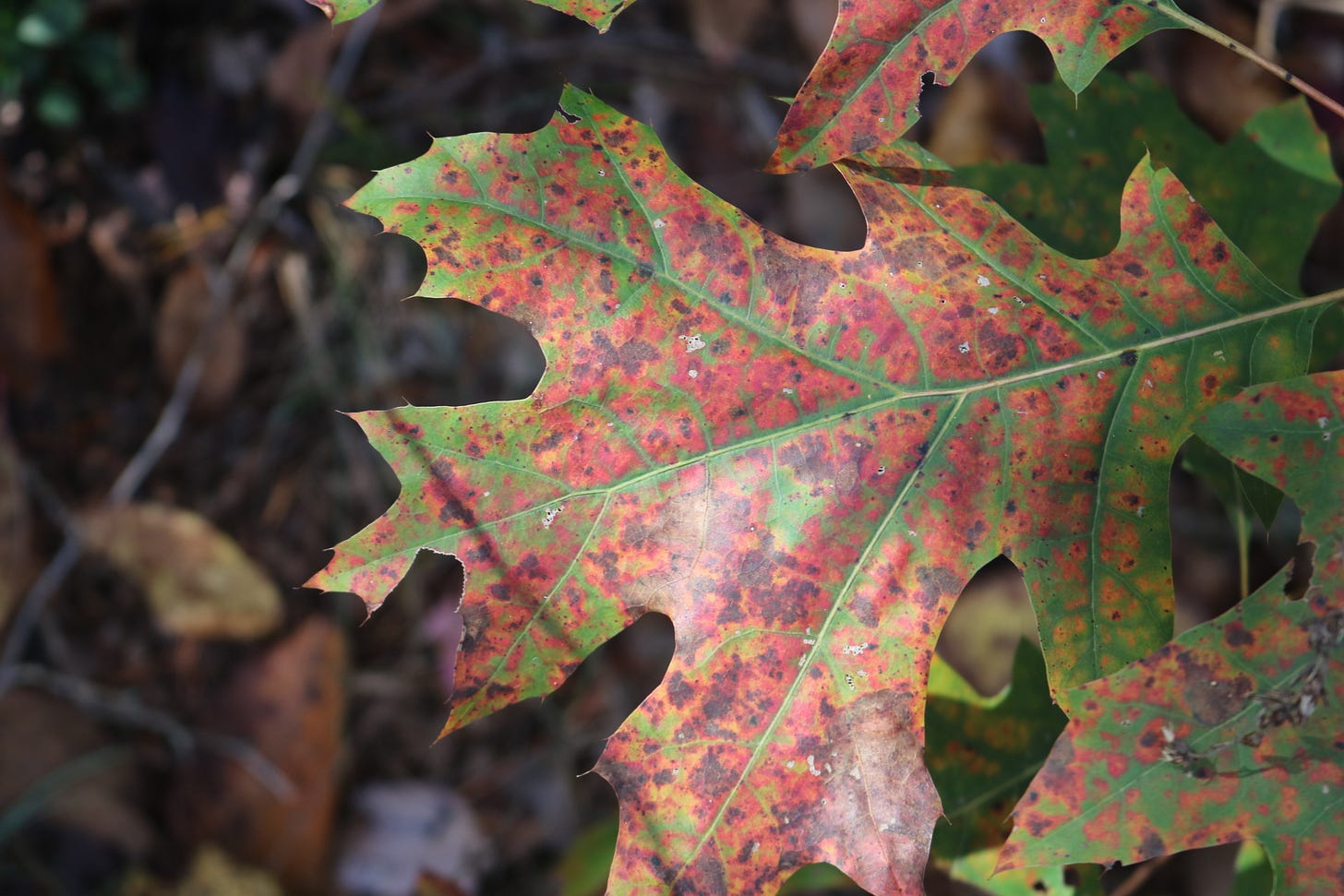“Why Oaks?” was my first Substack post on June 15, 2023. The number of posts has grown substantially since then. In some weeks, I posted three times. Recently, I cut the production to one per week, and the readership increased with fewer posts per week. Your comments on the frequency of publication are welcome.
The original post appears at the end of this edition. First, three poems I wrote at the Chattanooga Public Library’s Write and Chat, a semi-monthly writers’ group.
Protector He is the Lorax; he speaks for the trees. He is the Green Man, Mother Nature’s suitor. He comes with the spring, like Kokopeli playing his flute. He departs on the wind like autumn leaves. Beeches and Birches The birch girls and beech girls put on spring colors to dance in mushroom fairy rings. Don’t go near their trees with an axe. They are a barrier to forest destruction. Chickamauga Creek Sitting on the creek bank I saw the water boil where there were no rapids. Water sprites clothed in the colors of fall leaves beckoned me to swim with them. They were so lovely, I nearly jumped in, knowing I would have drowned.
I have some additional comments about oaks, before we get to my first Substack post.
Oaks fascinate me, as does the workings of the forest communities where they reside. An Oregon study found 40 species of fungi that live among the roots of Oregon White Oaks (a unique species).
Dr. David Haskell wrote about trees’ dependence on fungi to transmit chemical messages from tree to tree. His book was titled The Songs of Trees. The fungi take nourishment from the trees and sometimes transmit it to trees that would otherwise not survive.
Small animals transfer fungal spores to trees that become part of the network. Insects and earthworms aerate the soil. The Oak-Hickory forest in my backyard is a diverse community with numerous interactions.
Acorns are an important part of that community. As a food source for wildlife, the acorns determine how the wildlife community will thrive or starve. Acorns are part of the crop of edible tree seeds, known as mast. For example, well-nourished bears produce more cubs. The Wildlife manager who knows the mast crop knows if bears will thrive or merely get by in the coming year.
My June 15, 2023, post follows.
I grew up in Ohio, a land rich with oaks, and now I live in Tennessee. Oaks are prolific here. Red Oaks, White Oaks, Black Oaks, Post Oaks, Chinquapin Oaks, and many other species. Some oaks interbreed; therefore, identification can be tricky. They are sturdy workhorse trees, and some of them hold the niche once filled by the endangered American Chestnut. They grow in the company of Hickories, and some people use the term Oak Hickory forest.
I once lived in New England, where Beech and Maple trees dominated the region. The forests of New Hampshire have a different feel, just as a Pine forest has a different feel.
I also walked through a primeval Beech Maple forest at Warren Woods in the Michigan Dunes. The trees were big enough that it took a chain of three people to reach around one of them. I have also visited the primeval Tulip Trees of Joyce Kilmer - Slickrock Wilderness near Robbinsville, North Carolina, and I would love to visit a primeval longleaf pine forest of the coastal plain.
I am fond of all those trees and have written poems about them, but my life’s journey seems to have been from Oak to Oak thus far. Most of the stories in the newsletter will not be about trees, but I see them as ever-present. They are the setting in which my stories take place.





That first post was friendly philosophy, but what can you expect here? I am writing a nonfiction book about my experiences in the natural world. Some chapters are previously published pieces to which I retain the rights. Others are drawn from my unpublished journals.
All chapters are under review by a stringent writing group that offers developmental suggestions and holds my nose to the grindstone regarding matters of form. When I publish the book, it will be professionally edited, but here you see a work in progress.
Yes. Trees are ever present. I did not know about the hickores, nor that certain oaks had taken over the chestnut's niche.